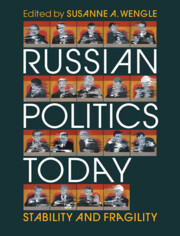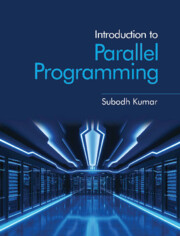Refine search
Actions for selected content:
36856 results in Cambridge Textbooks
Part A - Introduction
-
- Book:
- Equity and Trusts in Australia
- Published online:
- 09 November 2022
- Print publication:
- 31 October 2022, pp 1-20
-
- Chapter
- Export citation
8 - Equitable proprietary interests
- from Part C - Equity, contract and property
-
- Book:
- Equity and Trusts in Australia
- Published online:
- 09 November 2022
- Print publication:
- 31 October 2022, pp 122-132
-
- Chapter
- Export citation
Part D - Equitable obligations
-
- Book:
- Equity and Trusts in Australia
- Published online:
- 09 November 2022
- Print publication:
- 31 October 2022, pp 153-208
-
- Chapter
- Export citation
23 - Constructive trusts
- from Part H - Resulting and constructive trusts
-
- Book:
- Equity and Trusts in Australia
- Published online:
- 09 November 2022
- Print publication:
- 31 October 2022, pp 386-410
-
- Chapter
- Export citation
21 - Tracing
- from Part G - Breach of trust
-
- Book:
- Equity and Trusts in Australia
- Published online:
- 09 November 2022
- Print publication:
- 31 October 2022, pp 352-366
-
- Chapter
- Export citation
12 - Breach of confidence
- from Part D - Equitable obligations
-
- Book:
- Equity and Trusts in Australia
- Published online:
- 09 November 2022
- Print publication:
- 31 October 2022, pp 193-208
-
- Chapter
- Export citation
15 - Creating an express trust
- from Part E - Express trusts
-
- Book:
- Equity and Trusts in Australia
- Published online:
- 09 November 2022
- Print publication:
- 31 October 2022, pp 243-256
-
- Chapter
- Export citation
Copyright page
-
- Book:
- Equity and Trusts in Australia
- Published online:
- 09 November 2022
- Print publication:
- 31 October 2022, pp iv-iv
-
- Chapter
- Export citation
Abbreviations
-
- Book:
- Equity and Trusts in Australia
- Published online:
- 09 November 2022
- Print publication:
- 31 October 2022, pp lii-lii
-
- Chapter
- Export citation
Acknowledgements
-
- Book:
- Equity and Trusts in Australia
- Published online:
- 09 November 2022
- Print publication:
- 31 October 2022, pp xviii-xviii
-
- Chapter
- Export citation
10 - Fiduciary relationships and obligations
- from Part D - Equitable obligations
-
- Book:
- Equity and Trusts in Australia
- Published online:
- 09 November 2022
- Print publication:
- 31 October 2022, pp 154-177
-
- Chapter
- Export citation
Preface
-
- Book:
- Equity and Trusts in Australia
- Published online:
- 09 November 2022
- Print publication:
- 31 October 2022, pp xvii-xvii
-
- Chapter
- Export citation
19 - Trustees’ rights and liabilities
- from Part F - Performing the trust
-
- Book:
- Equity and Trusts in Australia
- Published online:
- 09 November 2022
- Print publication:
- 31 October 2022, pp 317-332
-
- Chapter
- Export citation
16 - Trusts for charitable and non-charitable purposes
- from Part E - Express trusts
-
- Book:
- Equity and Trusts in Australia
- Published online:
- 09 November 2022
- Print publication:
- 31 October 2022, pp 257-274
-
- Chapter
- Export citation
14 - Certainty requirements in the law of trusts
- from Part E - Express trusts
-
- Book:
- Equity and Trusts in Australia
- Published online:
- 09 November 2022
- Print publication:
- 31 October 2022, pp 224-242
-
- Chapter
- Export citation

Russian Politics Today
- Stability and Fragility
-
- Published online:
- 28 October 2022
- Print publication:
- 27 October 2022
-
- Textbook
- Export citation

Introduction to Parallel Programming
-
- Published online:
- 27 October 2022
- Print publication:
- 05 January 2023
-
- Textbook
- Export citation
Copyright page
-
- Book:
- Programming Languages
- Published online:
- 27 January 2023
- Print publication:
- 27 October 2022, pp iv-iv
-
- Chapter
- Export citation
2 - Scheme, S-expressions, and first-class functions
- from Part I. - Foundations
-
- Book:
- Programming Languages
- Published online:
- 27 January 2023
- Print publication:
- 27 October 2022, pp 88-199
-
- Chapter
- Export citation
15 - Everyday Economic Life on Russia’s Margins
- from Part II - Political Economy
-
-
- Book:
- Russian Politics Today
- Published online:
- 28 October 2022
- Print publication:
- 27 October 2022, pp 340-362
-
- Chapter
- Export citation
